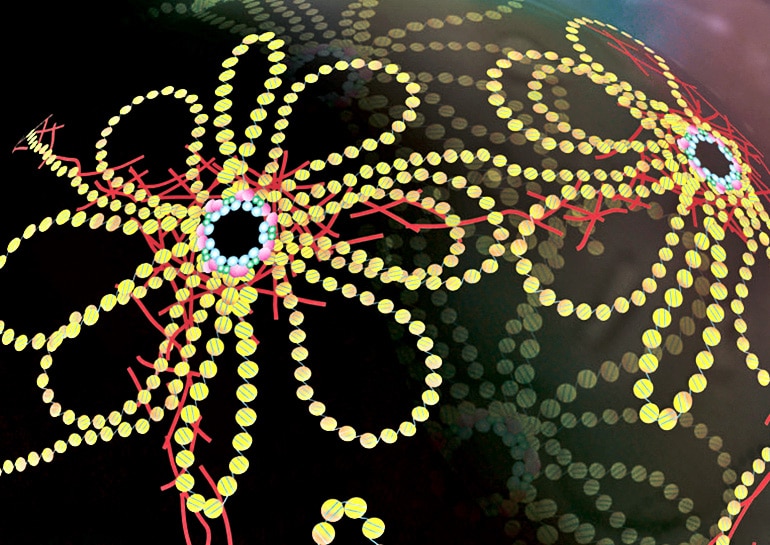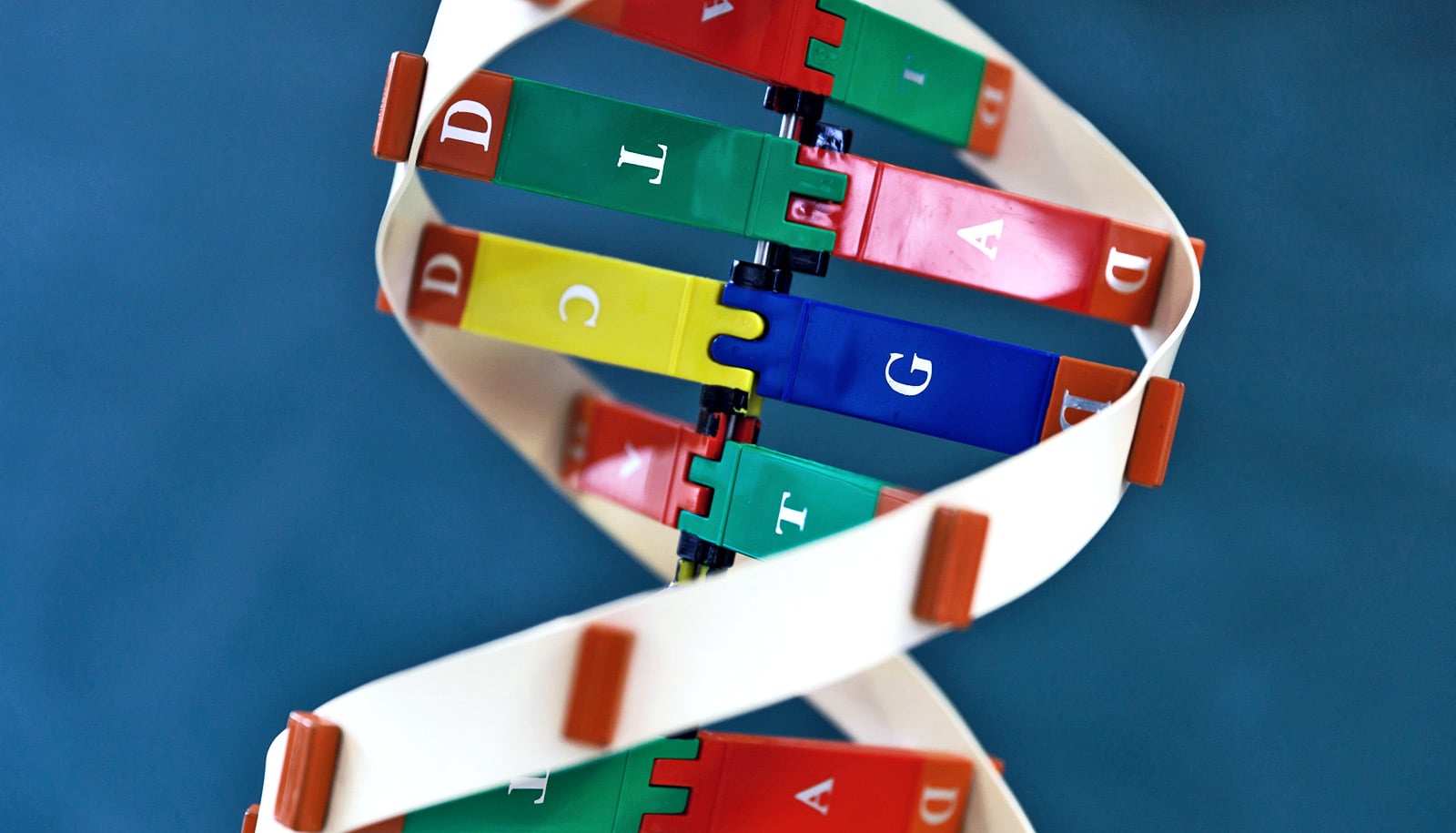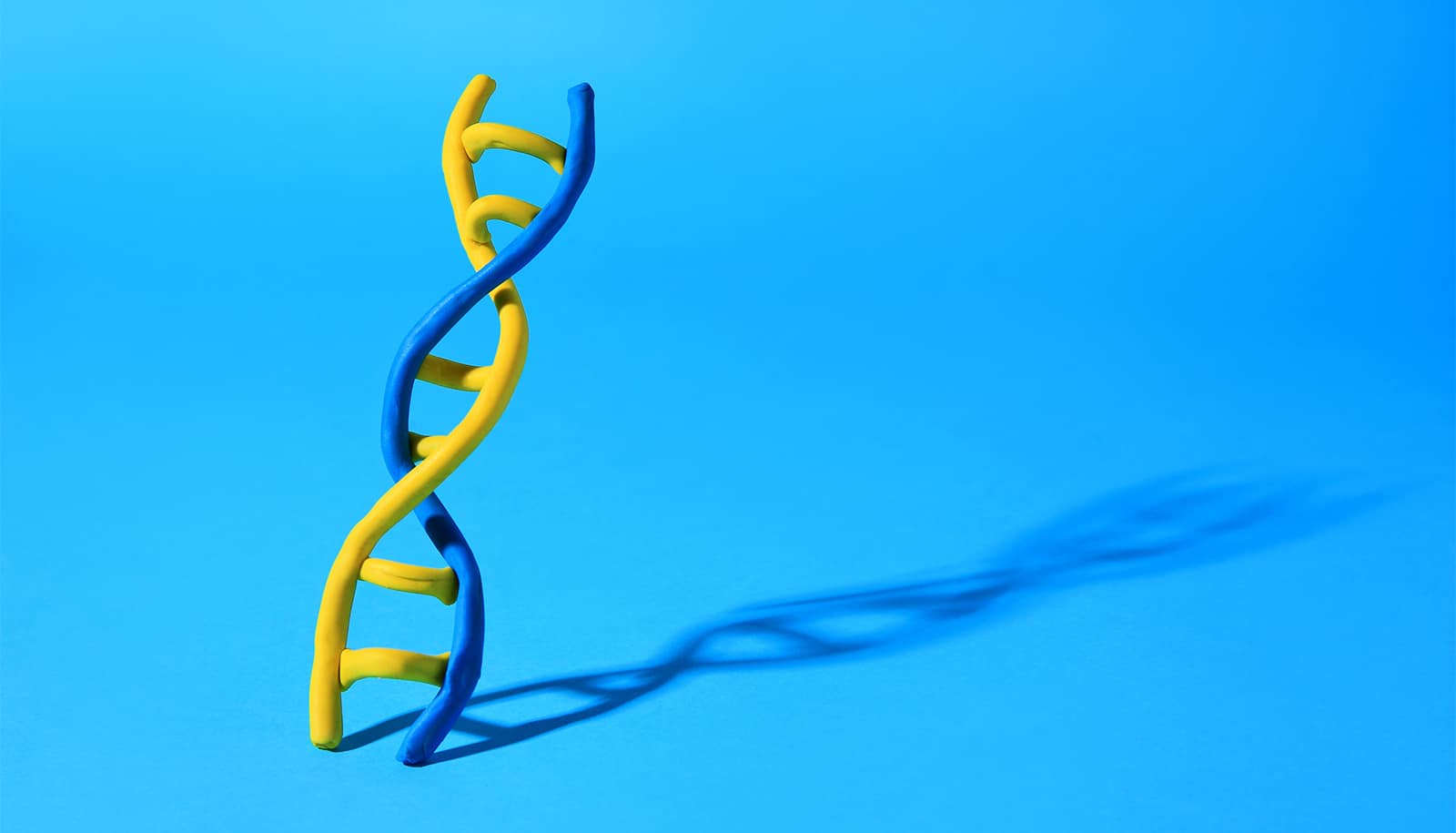Scientists have discovered a key aspect of how DNA forms loops and wraps inside the cell nucleus—a precise method of “packing” that may affect gene expression.
The research, which appears in the journal Science, shows that a process known as hemimethylation plays a role in looping DNA in a specific way. The research also demonstrates that hemimethylation is maintained deliberately—not through random mistakes as previously thought—and is passed down through human cell generations.
“In order for a protein called CTCF to make loops in the DNA, we discovered that it needs to have hemimethylated DNA close by,” says biologist Victor Corces, whose Emory University lab conducted the research. “Nobody had previously seen that hemimethylated DNA has a function.”

Chromatin is made up of CTCF and other proteins, along with DNA and RNA. One role of chromatin is to fold and package DNA into more compact shapes. Growing evidence suggests that this folding process is not just important to fit DNA into a cell nucleus—it also plays a role in whether genes are expressed normally or malfunction.
The Corces lab specializes in epigenetics: The study of heritable changes in gene function—including chromatin folding—that do not involve changes in the DNA sequence.
DNA methylation, for example, can modify the activity of DNA by adding methyl groups to both strands of the double helix at the site of particular base pairs. The process can be reversed through demethylation.
As cells divide they make a copy of their DNA. In order to do so, they have to untangle the two strands of DNA and split them apart. Each parental strand then replicates a daughter strand.
“When cells divide, it’s important that they keep the methylation the same for both strands,” Corces says, noting that altered patterns of methylation are associated with cancer and other diseases.
Hemimethylation involves the addition of a methyl group to one strand of the DNA helix but not the other. Some researchers observing hemimethylation have hypothesized that they were catching it right after cell division, before the cell had time to fully replicate to form a daughter strand. Another theory was that hemimethylation was the result of random mistakes in the methylation process.
To transfer genetic info using DNA, just ‘zip’ it
Chenhuan Xu, a post-doctoral fellow in the Corces lab, developed new experimental methods for DNA methylome mapping to conduct the research for the paper. These methods allowed the researchers to observe hemimethylation on DNA in human cells in real-time before, during and after cell division. They also mapped it as the cells continued to replicate.
“If the parental DNA was hemimethylated, the daughter DNA was also hemimethylated at the same place in the genome,” Corces says. “The process is not random and it’s maintained from one cell generation to the next over weeks.”
The researchers found that hemimethlyation only occurs near the binding sites of CTCF—the main protein involved in organizing DNA into loops.
“If we got rid of the hemimethlyation, CTCF did not make loops,” Corces says. “Somehow, hemimethylation is allowing CTCF to make loops.”
And when CTCF makes a loop, it does so by binding ahead, going forward in the DNA sequence, they observe.
Home DNA tests put gene experts in an awkward spot
“Research suggests that some disorders are associated with CTCF binding—either mutations in the protein itself or with the DNA sequence where the protein binds,” Corces says. “It comes back to the story of how important these loops are to the three-dimensional organization of chromatin, and how that organization affects the gene expression.”
Source: Emory University



